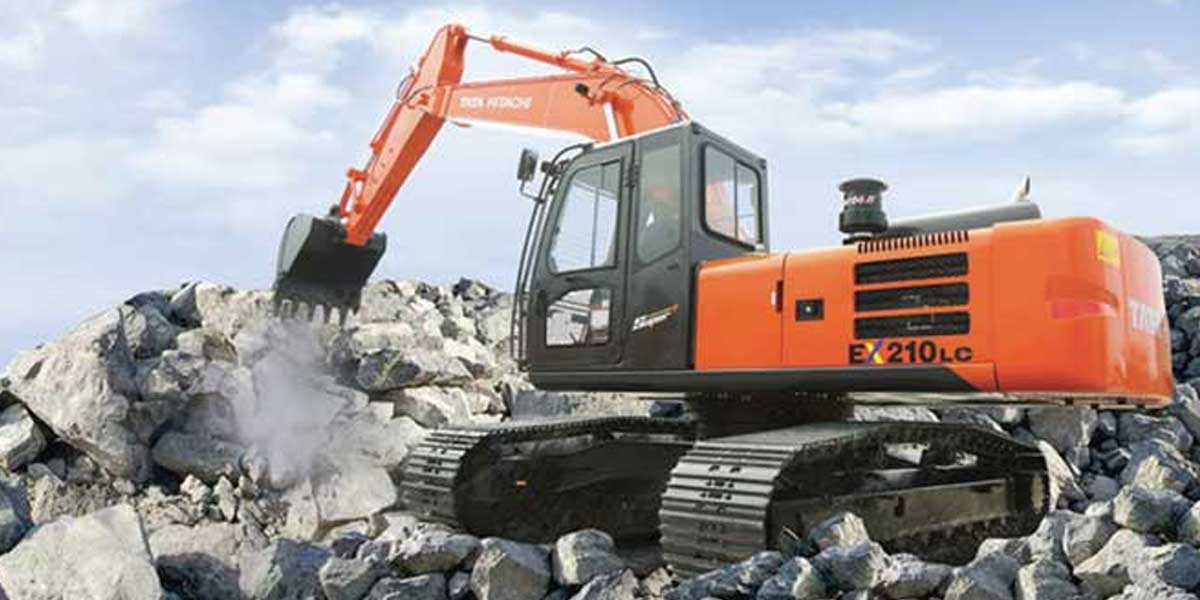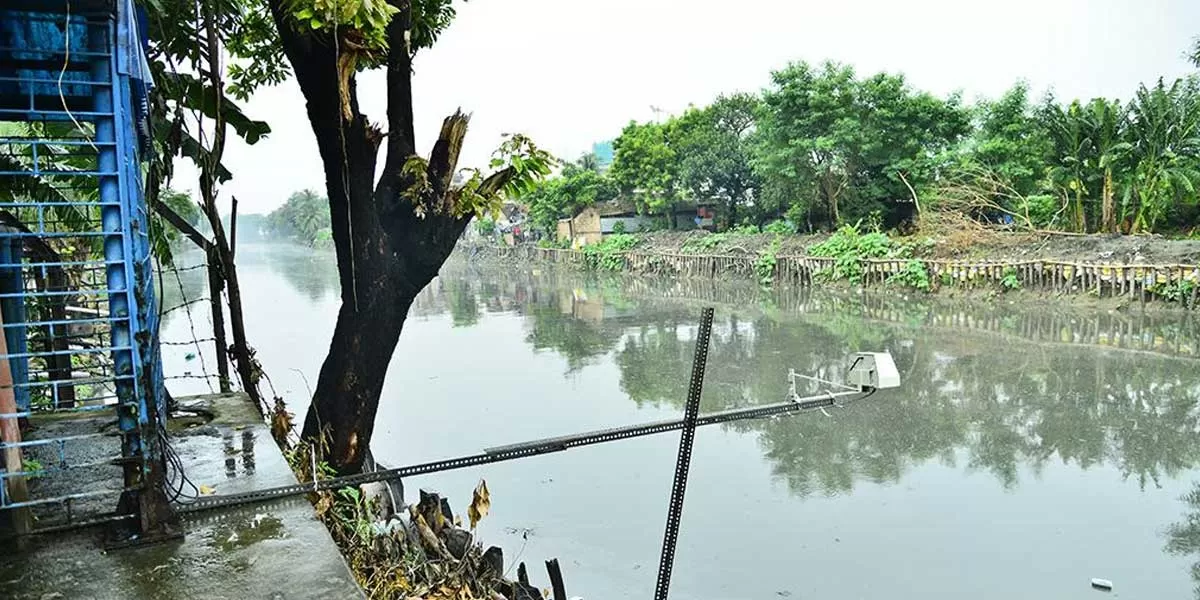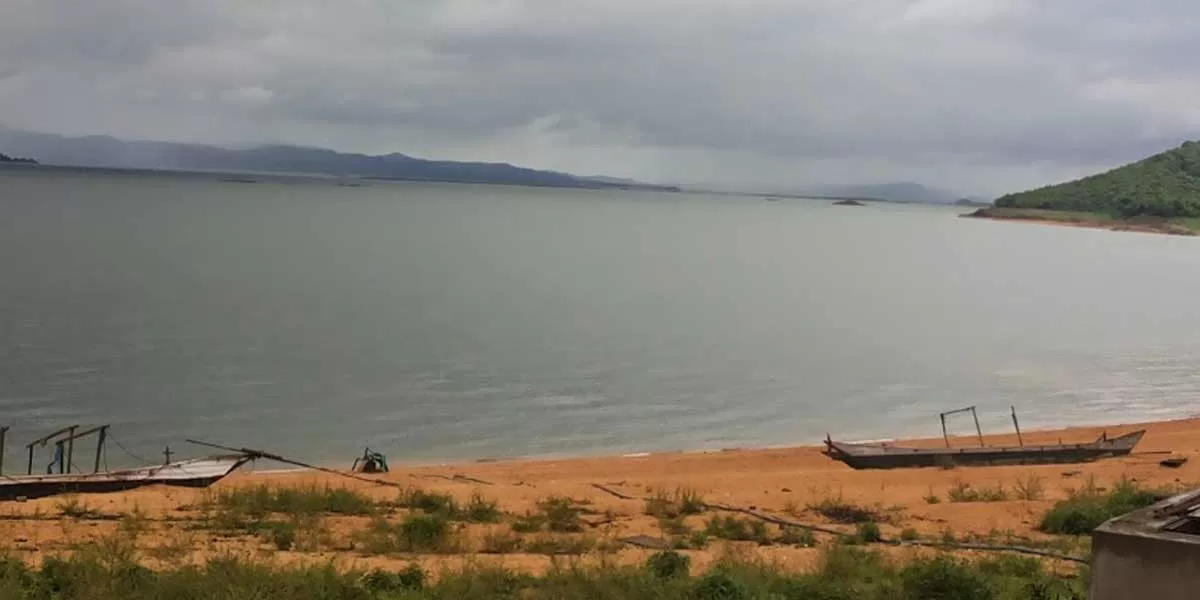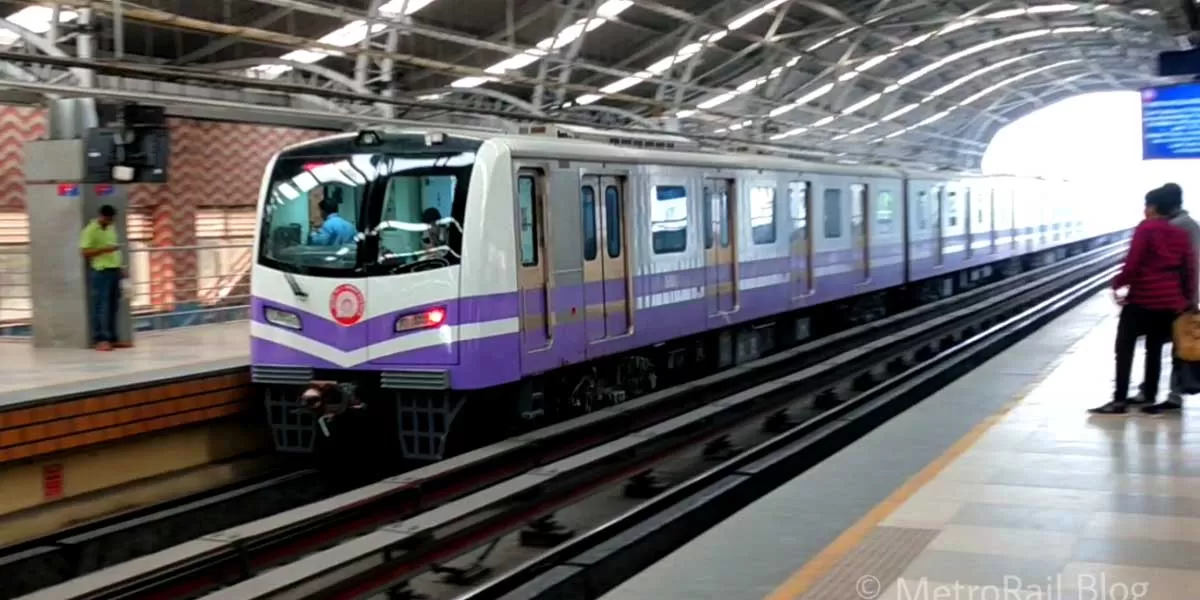According to industry reports, the earthmoving equipment segment accounts to more than 60 per cent by volume, which in turn sets the tone for the overall equipment market. Backhoe loaders and hydraulic excavators together make most of earthmoving equipment industry. As the major category in the construction equipment market, the growth of earthmoving equipment market depends on the infrastructure development and mining activities. Though the market was impacted by the Covid pandemic induced slowdown, the market is seeing green shoots after a revival in mining and construction activities back in action.The 2020 challenge“We should look at the market situation before Covid-19 hit us to understand where we are today as an industry,” Sandeep Singh, Managing Director, Tata Hitachi Construction Machinery Company says before speaking on the 2020 market. According to him, the construction equipment market faced a slowdown in fiscal 2019-20 - starting with elections, tight liquidity conditions and an excess and extended monsoon till November 2019. Therefore, the CE industry had declined by more than 25 per cent in H1 of 2019-20, setting a low base. There were indications of complete recovery in the months of January and February 2020, before Covid-19 hit us in March, leading to the full year de-growth of more than 20 per cent. “So, we are already on a low base this year. The lockdown and its immediate aftermath almost brought a complete halt to business.Factories were largely shut; movement of finished goods and inputs were affected and on the demand side, work at project sites was impacted because of migration of labour and restriction of movement,” he says.Hence, he adds, “Q1 volumes were down 60 per cent YoY this year. Q2 FY 21 has shown encouraging signs of a pickup but still for the H1 period this year, we are still down by nearly 35 per cent YoY on a low base.”Samir Bansal, General Manager India, Off-Highway Research highlights the CE market scenario, “After a 15-per cent drop in construction equipment demand to 83,470 units in 2019, signs of recovery were visible at the beginning of 2020. But, due to the Covid-19 pandemic and an unprecedented national lockdown beginning 25 March 2020, sales declined by an estimated 39 per cent in the first half of the year. However, demand for construction equipment recovered at unexpected levels in the second half and monthly sales reached peak levels by November 2020.”According to Bansal, road construction activities have remained strong even in the crisis period, and the Ministry of Road Transport and Highways alone successfully completed construction of 3,951 km of road during April-September 2020 and aims to construct a total of 11,000 km of roads in the financial year ending March 2021.Sandeep Mathur, Brand Leader, CASE India elaborates on the adverse experience faced by the company and how it took on the challenges. “At CASE, we also faced roadblocks initially but we acted quickly, adapted to the situation and worked our way through it. Credit goes to our sales teams across India and the support given by our marketing teams. Aggressive campaigns which generated a lot of interest in the market helped us. Through CNHi Capital, our NBFC, we’ve also been able to pass on huge benefits to our customers, creating opportunities for capital in the market and allowing for cheap loans during a time where there is a financial crunch. At CASE, we believe in taking on real challenges with agility and perseverance and will continue to do so.”According to Yogesh Sindwani, National Portfolio Manager, BHL & Compactors, Escorts Construction Equipment, Indian construction equipment industry has gone through a very bad phase in the first quarter of the current financial year due to the pandemic. But from July 2020 onwards, industry started recovering and especially the earthmoving and road construction segment have started growing in double digits. Backhoe industry by November 2020 has shown marginally positive growth over last year. For Escorts also the start of the year was bad but from July 2020 onwards it has been good for us in our earthmoving and road construction equipment range, that is backhoe loaders and compactors,” he adds.Market revival in 2021 According to Singh, among the segments with significant volumes, backhoe loaders and compactors have recovered the fastest and the rest of the segments are showing very significant recovery in the last couple of months. “The good monsoon last year leading to a record rabi output and a good monsoon for the second consecutive year has supported the backhoe loader demand in the rural market. This has been further bolstered by the government focus on rural infrastructure including PMGSY (rural roads) as well as PMAY (rural housing),” he adds.On the roads sector push and demand from mining, Singh says, “The fast resumption and recovery of the road building program of the government has driven demand for compactors as well as hydraulic excavators despite labour shortages at construction sites. More than 3,900 km of highways were constructed in first half this fiscal year, a positive when looked in the context of lockdown interrupted construction in the busy period of April and May this year. Highway awards of more than 5,000 km grew by an impressive 140 per cent YoY despite lockdown, suggesting the focus in large scale highway construction this year and beyond.” The recovery in the roads and highways segment has also driven demand for stone aggregates and demand coming from the stone quarrying and crushing segment as well as sand mining and for bricks used in construction. This has further helped in the recovery. A good number of contracts in coal mining as well as increased demand for iron ore following last year’s auctions have supported demand for mining equipment.”The relatively lower impact of Covid-19 spread in rural India and natural social distancing at construction and mining projects have helped in rebuilding confidence of the stakeholders to move ahead in building infrastructure. According to Singh, south continues to be a large market for construction equipment, followed by north, east, north-east and west. “Even though south saw a rapid and large spread of Covid-19, the government’s unlocking and fast normalisation of economic activities helped, as also the construction activity as explained before,” says Singh.According to him, Kerala saw a good demand for mini excavators and continues to drive that market. Similar is the case with north, where a lot of construction activity is focused - driven by Uttar Pradesh, Rajasthan etc. He explains the progress in other markets, “Covid-19 spread in east happened in phases, but rural activity and mining is driving demand in this region. Road construction activity has also accelerated in the north east. West, traditionally a big market, of which Maharashtra contributes to a large part, the intensity of Covid-19 spread and slower relaxations probably led to a slower recovery of the market.However, the activity there also has picked up, led by the construction of the Mumbai-Nagpur Samruddhi Mahamarg. Another area where we see growth is the need for equipment in the border road areas.”Mathur is confident on the market growth in 2021 as he comments, “The revival of the industry has already started. The government is continuing to announce the commencement of new projects to speed up the activities in the sector. Recently, Union Minister for Road Transport & Highways Nitin Gadkari had reiterated government’s commitment to make India a manufacturing hub. The government has announced an investment of Rs 500 billion for construction of highways for the economic zones to ensure better connectivity. These measures are an attempt to ensure positive growth of the industry in the upcoming time and would most likely result in an increased demand of road construction equipment as well.”According to Sindwani, industry is already on a positive growth and looking at the thrust of the government on projects like Make in India, Atmanirbhar Bharat, Smart Cities, Bullet train, highways etc which are the key driving factors for construction equipment industry as whole. He adds, “There could be some dent in the first quarter of FY 21-22 due to upcoming BS-IV norms but that would be temporary. Eventually, the demand for high productivity products is going to grow because of demand from government to complete the projects in stipulated time. We at Escorts are continuously working on our products to meet the customer demand and take full advantage of the anticipated industry growth.” To cater the infrastructure and road development, Escorts is serving country with complete range of backhoe loaders with model named as Digmax II and Jungli. In process of giving end-to-end solution, Escorts has launched its new product series named ‘Whiteline Products’ which includes new range of pick and carry cranes, backhoe loaders and compactors.As the year 2021 unfolds, the economic revival has already begun. The government is coming up with policies and announcements to boost the construction sector. Mathur highlights, “Currently, we are observing a lot of project announcements for the roads and highway sector. The government is focussing on invigorating the infrastructure of the country in order to make India a more investment and business friendly place. At CASE we are ready to partake in all of the upcoming projects with our full portfolio of efficient equipment for every terrain and site.”On the key trends to look for in 2021, Sindwani says that the factors such as production, sales demand, Make in India and exports, new emission norms and cost play key roles in the overall CE as well as earthmoving equipment industry. He adds, “Production demand is going up which will need the industry to develop products with higher productivity with reliability. Make in India has already shown positive sentiments from the Indian buyers and this is also a motivation for Indian manufacturers like us to design and develop world-class products. This will open up more export markets for Indian manufacturers. New emission norms will create some dent on higher capacity products mainly because of the price difference with the existing BS III products, but then looking at the productivity demands it will get back to normalcy very soon.”Equipment finance Finance is the backbone of building growth for any industry. Being the most popular and demanding category, earthmoving equipment are perhaps given top priority by banks and NBFCs for financing. However, in the current market scenario, financial institutions have become rigid in providing finance for equipment purchase even for earthmoving equipment. Singh elaborates on the trend, “As already mentioned, the CE industry witnessed de-growth in FY 19-20. This was further compounded by the lockdown. From a negative growth of 50 per cent in Q1, H1 has regained some lost ground, but still is at negative 25 per cent. Q2 and October sales have shown some significant gains, but that again is also because of a poor quarter a year ago.”Mathur points out that this year, the pandemic hampered the financial capabilities of every business due to which securing finance became a challenge. He says, “Equipment financing in such times acts as a remedy to resolve the financial pressure from the customers. According to the Feedback Consulting report, the construction equipment finance industry is expected to reach a value of Rs 660 billion in fiscal 2021 with a CAGR of 20-21 per cent between fiscal 2018 and fiscal 2021.”He further adds on the company’s initiatives, “In order to alleviate liquidity, we at CASE through our financial arm CNHi Capital, are making sure there’s enough capital available for customers who wish to make purchases. We offer lucrative schemes that can help potential customers in buying equipment and have also introduced a 48 hours loan approval policy to facilitate easy loan service. We’ve always gone the extra mile for our customers and will continue to walk shoulder to shoulder with them.” Sindwani is of the view that almost all the major NBFCs as well as PSBs are active in financing earthmoving equipment. “Escorts has also tailor made tie-ups with selected NBFCs and PSBs for our earthmoving equipment.”Rental pushRental market is considered as a major growth driver for earthmoving equipment market, especially for backhoe loaders and excavators. However, compared to world market, India is still far behind in having an organised rental market. According to Singh, the CE market in India lags the world in having an efficient and sizeable rental business model.He adds, “Post Covid, there will be a move to expand this business as companies will shift to efficient allocation of resources and capital. We are seeing an initial movement towards organised rentals and the benefits of cost, quality, and customisation are being recognised. We have already started our rental business on a pilot scale last year and look to expand it with machines with special attachments and customisation. These will be backed by a commitment on upkeep of the rental units and an assurance of usage hours.”Mathur comments on the rental market scenario, “Before the pandemic, the rental market in India was in a nascent stage.Currently, as the pandemic sets in, securing finance is becoming a challenge, so there could be a possible surge in the rental market. However, at CASE India, through our financial arm CNHi Capital, we are making sure there’s enough capital available for customers who wish to make purchases. We’re hoping that any liquidity crunch is alleviated through their efforts.”Sindwani adds, “As of now the rental market for earthmoving equipment is at a toddler stage and in my opinion it will take time to grow. We at Escorts are not in rental business as of now, but we are exploring the same for our higher capacity models.”Brighter outlook The government is taking bold steps for infrastructure creation and mineral exploration and production in the country with more policy initiatives to boost the activities. Though there is a dip in the progress, the overall execution processes are expected to pick up from 2021 and will continue on a sustainable manner. According to Singh, in the near term, a lot will depend on the infra push of the government accelerating, easy availability of financing and construction companies emerging with stronger balance sheets. He says, “If you look at the current pace of recovery for the reasons stated before, it is clear that the government intends to focus on investing in infrastructure to power the sustainable recovery in the economy.”He adds, “They have reaffirmed the budgetary allocations to continue and have further announced a Rs 250 billion additional capex spend over and above the more than Rs 4 trillion announced in the 2020-21 budget, and a Rs 120 billion interest-free loan to states to spend on capex. Further, the government continues to push for an aggressive highway building programme for this year and beyond.”However, according to Singh, delayed project implementation and execution, low adoption of mechanisation along with long term project finance availability remain key demand related challenges for the CE industry. “Further, Covid-19 has seen state government resources being increasingly used to addressing healthcare concerns, revenue expenses like salaries, pensions and social welfare programs, and the drop in revenue generation – in spite of additional room allowed for market borrowings - is a concern for funding sustained capex spend in the near term,” he feels.In the longer term, the $1.4 trillion National Infrastructure Pipeline (NIP) is the key demand driver for the construction equipment industry. The NIP includes construction projects across various sectors such as road transport, railways, irrigation, water resources, airports, and so on. According to Singh, with the launch of the India Investment Grid (IIG) portal, the government has provided greater transparency with respect to the status of NIP projects and it is expected that infrastructure spending by the government will continue to remain robust in the coming years.On the overall market outlook of Indian CE industry and earthmoving equipment in particular, Singh observes, “While the decline in the CE industry, volumes have moderated in Q2 FY21, the full year growth is expected to remain in the negative zone. However, FY22 onwards, growth in the CE sector is expected to rebound provided government spending on infrastructure project remains stable and as envisaged in the NIP. Therefore, we are confident the CE sector has tremendous potential to grow and has been one of the fastest growing in the world.”Bansal is of the view that considering the set of conditions prevailing in the country and other foreseeable factors at the moment, the market for construction equipment will follow an upward trend in the long term, but with a dip in 2020. The market will continue to be dominated by popular earthmoving equipment products of backhoe loaders and crawler excavators, apart from mobile cranes, compaction equipment and wheeled loaders.There is a brighter market for Indian construction equipment market broadly and earthmoving equipment in particular in the coming years due to the bounce back of sectors such as road construction and mining. However, issues related to raw material cost for equipment manufacturers and financing for contractors need to be addressed to achieve the goals of government schemes such as NIP and Make in India.Key CE industry trends to look for in 2021Make in India: Higher raw material prices are a concern for the industry. Steel prices were moving up even before Covid-19 hit us and the Covid-19 impact was short lived. From August, the industry has been seeing higher steel prices and within three months, domestic HRC prices have gone up by nearly 20 per cent from the post Covid-19 low (from ~Rs 35,000/tonne in July to Rs 41,700/tonne in September).This sort of volatility and high cost of raw material will not only impact the product prices in the coming months, but will significantly impact the financials of the companies in this sector.We have taken up this issue with the government, as not only will it impact domestic CE industry but also impede the government’s move to make India the manufacturing and capital goods base for exports.From a construction equipment standpoint, more than 90 per cent of the volume of machines manufactured in India is localised to an extent of 50 per cent. This is an average figure and some manufacturers have more localisation. These include the equipment sold in the largest volumes such as hydraulic excavators and backhoe loaders.A large base of vendors has been developed over the years, many of whom are in the MSME category. So, there is a robust manufacturing base in the country.Components that are imported include precision aggregates such as valves, hydraulic motors, electrical sensors and undercarriage assemblies. Because of the high investments required to set up manufacturing units in India for these components, volumes are required. This can happen through enhanced local demand through infra investments as also export incentivisation.If the right conditions for global investment are created, we can enter partnerships with global players and service the Indian market as well as the global supply chain. We will have to grow our competitiveness to attract these opportunities against other countries doing the same. Some of the inherent common manufacturing disabilities that we have, such as land acquisition, cost of capital and logistics need to be addressed. And this puts us at a cost disadvantage.Another disadvantage is the cost of steel, a critical raw material, compared to what prevails in other markets.Exports: We export directly to SAARC nations and also through the Hitachi Construction Machinery Company network to mainly the Middle East and Africa. Exports are not a big contributor to our turnover and even as an industry, not more than 12-15 per cent volumes are from exports.Covid-19 has had a big impact to all countries we service and more so in the SAARC region. We are seeing some recovery in Bangladesh, Africa, and the Middle East. As far as the rest of the world is concerned, it will depend on the global economy and path to recovery. The IMF recently announced that global recovery has been faster than anticipated and they might revise global growth forecasts.The CE industry has the manufacturing capability to address these opportunities from overseas and expand it further if some of our needs are met.New emission norms: The CE industry has been very proactive and has been continuously engaging with the government as well as the regulators in jointly working suitable and appropriate regulations to make the industry safer as well as attain world-class standards.The implementation of BS (CEV) IV emission norms for construction vehicles that ply on roads was to have been implemented on 1st October 2020. The lockdowns impacted our program of meeting the emission norms as testing of machines and supply chains were disrupted.We had several interactions with the Ministry of Road Transport and Highways, including the Hon’ble Minister, MORTH, as well as the Minister of State. They were very supportive and helped the industry by extending a window of six months to complete the process of this transition.This will help the industry reboot the supply chain and also work with testing agencies to stabilise the manufacturing program for the new products.The new norms will require additional investments in the equipment and these would obviously add a sizeable cost component.- Sandeep Singh, Managing Director, Tata Hitachi


















